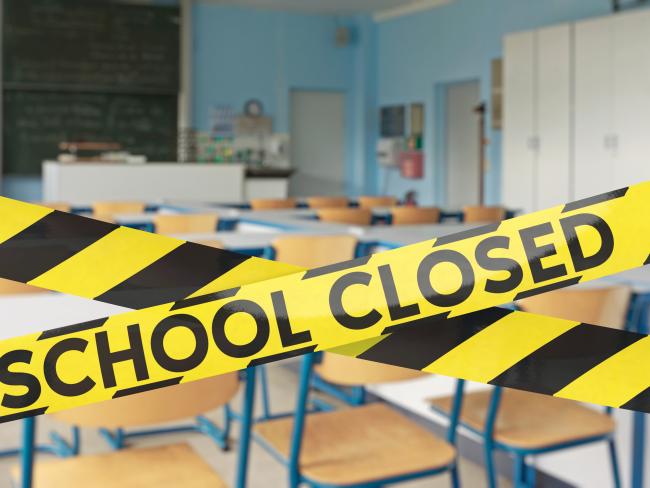The closure of over 100 schools in England just before the start of term was sudden and unplanned. But it was no surprise. Many of Britain’s school buildings are in a poor state of repair and have been for some time. This is a threat to safety and detrimental to the pupils’ education.
Despite the evidence, there has been no effective response from government, whether national or devolved. The bland government announcement about closures due to concerns about some concrete used in schools belies a lack of action and urgency.
Failure
Reinforced autoclaved aerated concrete (RAAC) – a lightweight form of concrete that is susceptible to failure – is present in other public buildings besides schools, including courts and hospitals.
The government is more than happy to contribute to rebuilding Ukraine – as Rishi Sunak did at a conference in London in June, pledging 1.3 billion dollars from the British taxpayer.
'About 1 in 13 pupils are affected by substandard buildings.’
Less than a week later, the National Audit Office NAO published a report on the dire state of school buildings in England. This showed that 700,000 pupils were learning in a school environment where buildings require major rebuilding or refurbishment. There are just over 9 million school pupils in England – so about 1 in every 13 are affected by substandard buildings.
Risk
Teaching unions raised the issue in February – seven of them wrote to the government about buildings at risk of collapse. And subsequently they have been pressuring for the buildings at risk to be identified.
Simon Allford, president of the Royal Institute of British Architects, said: “All young people and staff deserve to learn and work without fearing for their safety. We have repeatedly raised concerns about the dangerous state of some school buildings – and the Government has failed to fund desperately needed repairs.”
Irony
The irony is just too great, and we must tell the politicians not only to sort out the unsafe buildings, but to stop the posturing on the world stage and get a grip. Stop spending money on weapons to Ukraine or a “rebuilding Ukraine fund” when our own schools could catastrophically collapse due to structural failure at any time.
The NAO report is about England, but the issues are similar in Wales and Scotland. Scotland has a history of structural problems in relatively new buildings. There was a serious incident as long ago as 2016 when nine tons of masonry fell at a poorly constructed school in Edinburgh.
Prioritise
The detail of the audit office report really matters. Every parent with a child in school in Britain should read it. Parents, unlike politicians, have an ability to prioritise and must insist that the rebuilding commences.
What is the point of an Ofsted inspection looking at safeguarding policies when the whole school building is susceptible to catastrophic collapse? As a working class we cannot allow another Aberfan disaster where school children were crushed to death in their classrooms as a result of a predictable event.
‘Every parent should ask does my child’s school have RAAC?’
The NAO report details numerous risks to child health but every parent will or should ask: “does my child’s school have RAAC?” The Department for Education (DfE) sees RAAC as the greatest risk to safety across the school estate.
RAAC was used in school construction from the 1950s to the mid-1990s. School buildings constructed using RAAC have an increased risk of structural failure, which can happen with little or no warning. In late 2018, DfE was notified when a roof containing RAAC suddenly collapsed at a school.
Not credible
Government claims of a sudden realisation of the risk in the past few weeks are not credible. The NAO report is unequivocal: “Since summer 2021, DfE has assessed the threat to safety in school buildings as a critical risk. It does not consider its existing mitigations as sufficient to bring the likelihood of this risk materialising down to acceptable levels.”
Since May 2023 there has been some central government funding available for those schools with the most immediate risk of collapse due to RAAC. It is unclear from the report how extensive this funding will be. Nor has the recent statement about closures made it any clearer.
The report points out that not all schools affected have even been identified. That may be why the DfE has so far not provided a definitive list of the schools at risk.
This work is urgent, and children’s lives depend on it. Parents and teachers together are a powerful force and must take the lead because only they can.

